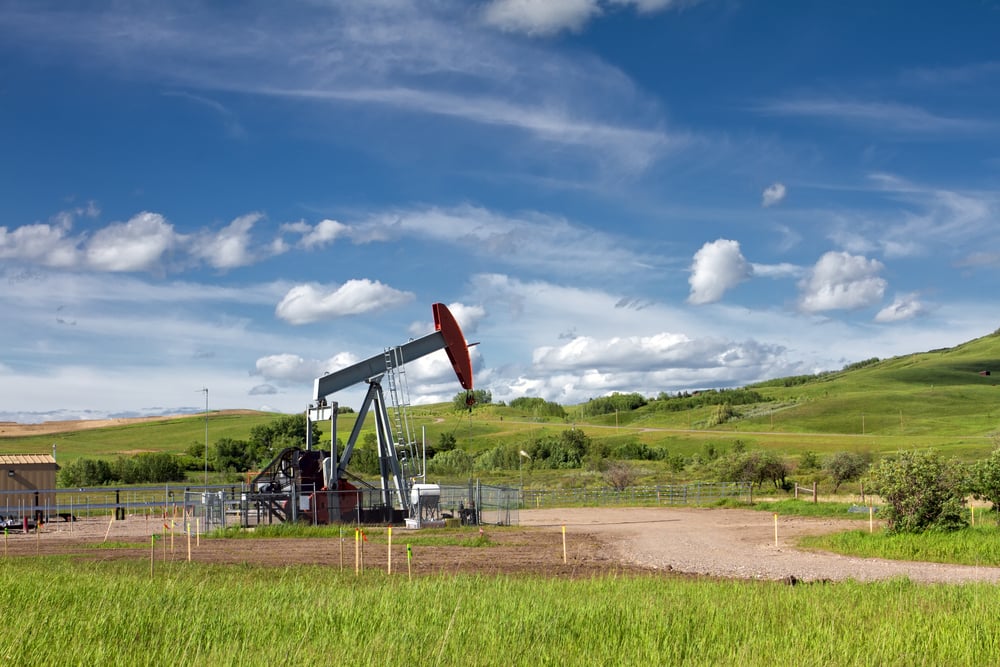
While pooling and unitization are often used interchangeably, they are not the same thing. Oil and gas operators (lessees) look for the most cost-effective way to get the most mineral out of the ground. Mineral owners (lessors) look for ways to drill while complying with spacing and density rules. Unitization and pooling are the respective methods used in these circumstances.
What exactly are pooling and unitization, and how are they different? Is there a relationship between them?
Defining Pooling and Unitization
Pooling, in the oil and gas industry, means placing separately owned mineral interests or leasehold interests into a single entity with enough acreage to receive a drilling permit under the relevant state or local regulations.
Spacing and density laws were put into place to limit the number of wells within a specified area of land. They come from the days when anyone who discovered oil or gas beneath their tract could drill a well. The result was numerous wells packed rather tightly together, some of which were probably pumping from the same reservoir below the surface.
Pooling, also called communization in federal oil and gas leases, focuses on combining land to create a tract large enough to permit and place a single well.
Pooling can be voluntary or forced. Lessors can agree to pool, or one or more owners may be forced to pool by the majority of owners of the tract.
Unitization, on the other hand, refers to combining separately owned mineral or leasehold interests related to a common supply such as a reservoir or field to create a joint operation to maximize production and optimize operations. Unitization generally involves a larger area than pooling and is undertaken for purposes of resource conservation.
Like pooling, unitization can be voluntary or forced.
Historical Context
As mentioned in the opening paragraphs, pooling and unitization were concepts created to meet regulatory requirements, as well as, optimize operations.
- Governments were seeking to prevent waste, human life, and damage to the environment.
- E&P companies wanted to create efficient operations that included merging all leases for a field or reservoir into a single contract.
- The legal structures protected the rights of lessors to participate in mineral development in tracts too small to obtain a permit and help develop the land more profitably for all concerned.
Before spacing and density laws, inefficiency was rife within the system, which also awarded overproduction. Furthermore, regulatory agencies needed a way around the rule of capture, which allowed one person to legally drain gas or oil deposits under a neighbor’s land.
The Benefits of Pooling and Unitization
Beyond cost efficiencies and creating patches large enough to obtain a drilling permit, pooling and unitization are positives for a couple of other reasons.
- The life of the lease is extended for all contracts beyond the primary term for as long as production from any single tract is included in a communized lease. However, a Pugh clause can limit the area for which the lease is extended.
- The production from a well on any tract relieves the obligation to drill offset wells on other tracts to prevent drainage by a different well.
- Wells can be located without worrying about property lines.
- Lessees are obligated to an implied covenant for “reasonable” development of separate tracts.
- Starting a well on any tract excuses payment of delay rentals on all included tracts until the date specified in the communized lease.
The ability to drill a well without consideration of property lines results in more efficient drilling plans and, potentially, reduced numbers of well-heads, which can reduce operations and maintenance costs. It also keeps lessees from the expense of drilling just to prevent someone else from draining the oil under their tracts through the rule of capture.
The Impact of Pooling and Unitization on Lessors (Owners)
Pooling and unitization affect owners the same way.
- Each owner (lessee) gives up the right to separately to develop his or her own tract.
- Each lessee gives up the right to receive all the royalties from production of wells sitting on his or her own tract. (They only receive a percentage as set by the pooling or unitization agreement.)
- Everyone gives up the right to have wells drilled on their own property to offset other wells on the leased lands.
- Everyone gets to share proportionately in the royalties from wells on tracts other than their own.
If the pool is productive, lessees gain more than they relinquish if they agree to pooling and/or unitization.
Differences Between Pooling and Unitization
While both terms share some similarities in general meaning, each is a legal term with a different underlying meaning from the other.
- The purpose differs. Pooling refers to the drilling of a single well, while unitization refers to the development of an entire field or reservoir.
- The language within the contracts is different. Pooling language speaks more to drilling or spacing units in compliance with state drilling or spacing regulations. Unitization speaks to the cooperative development or operation of one or more mineral reservoirs or parts of reservoirs.
- The legal consequences sound similar but play out differently in the real world.
A bit more about the legal consequences of pooling versus unitization.
The pooling of tracts, voluntary consolidation among interests, or compulsory joining of all interests in drilling and spacing entitles a lessee to a single well location. The pool is not related to an oil pool as a natural physical entity; it refers only to the presence of a portion of the pool under a specific property.
Operations are still competitive among enlarged units as permitted by conservation laws, but the number of competing entities is limited.
Unitization is a deliberate consolidation of a high percentage, if not all, of the royalty and participating interests in a pool and permits reservoir engineers to plan operations according to the natural energy mechanism of the reservoir.
There is less disruption by legal challenges from competing properties and allows the optimization of production for an entire field or reservoir.
Summary
Pooling and unitization are both methods of gathering separate tracts and oil and gas leases into a single unit. Pooling refers to joining together enough acreage to allow issuance of a drilling permit for a single well. Unitization refers to joining together large areas such as an entire reservoir or field to optimize operations, introduce efficiencies, and reduce costs.
Both pooling and unitization can be voluntary or forced. The contract language of each differs, and the legal consequences of the contracts are not the same. However, the results are similar in that multiple lessors share in royalties from participating in the pool or unit, some of whom may own tracts too small to develop individually.
Horizontal drilling, especially in Texas, is creating challenges for lessees and lessors. There is little case law addressing a horizontal well that traverses a tract that is not part of a pool or unit. Pooling and unitization law will likely make changes to retain fairness, environmental conservancy, and profits from the new shale operations.
Pooling and unitization are similar in some practices and language, but very different in others. All parties should understand the true meaning of both before signing any leases or contracts.























